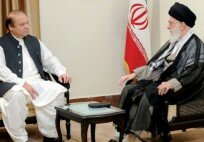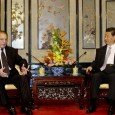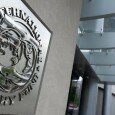By Ali Khizar –
Dar’s economy of numbers
There was visible hustle bustle in the economic corridors and business houses upon the formation of the PML-N government last year. The investors welcomed a change from the allegedly corrupt and inept PPP government, and had high hopes from the business friendly Sharif government. There was euphoria in the business community of Punjab in the early days, with the big guns advising the Prime Minister on how to turn around the economy. However, with the passage of time, the strong ties between the business tycoons and those at the helm of affairs in Islamabad seem to have loosened a bit.
The onus of reviving economic activities is falling more and more on foreign funding. The government has made extensive plans of mega investment in the power sector and infrastructure projects, it is envisaging investment and loans of $32 billion from China in the next 5-7 years. In addition, about $11 billion have been pledged by The World Bank, with no worries of paying back for two decades. The International Monetary Fund (IMF) is lending $6.6 billion for balance of payment support and strengthening of the foreign reserves. Furthermore, the government raised $2 billion from Euro bonds and received a generous gift of $1.5 billion from Saudi Arabia. The idea behind this foreign investment in infrastructure seems to be crowding-in domestic investment through clearing bottlenecks and opening banking avenues for private credit.
These flows have helped in improving the foreign reserves’ position to $13.6 billion from the low of $8 billion in January. The currency, after a free fall in the second and third quarter, had sharply appreciated after the influx of dollars. In real terms, there is enough room for nominal exchange rate to depreciate in order to attain equilibrium. However, Dar’s perseverance in keeping the rupee/dollar parity below 100/1 has not let that happen so far. The result of this forced maintenance of the currency at these artificial levels has resulted in the trade deficit widening, with exports losing out their competiveness and imports becoming cheaper. The repercussion could be in the form of import substitution of domestic industries.
Dar is countering this by announcing enormous fiscal packages for exporters and enticing foreign investment by giving them a tax break of 40 percent. There are some desperate steps taken by the government to spur domestic investment, such as announcing an amnesty scheme for underground investors to bring money in various industrial sectors. The government is also reducing tax in the formal sector in a staged manner from 35 to 30 percent. None of these polices have worked so far in building momentum as investment to GDP ratio has fallen further to 14 percent – lower than any year of the previous PPP’s government.
The greatest roadblock to the investment, apart from terrorism, is the energy shortage. Dar was on it right from the onset by paying off the receivables on a priority basis of the efficient power generation units, and thus cleverly accounted the fiscal cost of circular debt (Rs480 billion) to PPP’s last year’s deficit. In addition, more gas was allocated to the power sector at the cost of various industries, like transport. This was a quick fix resulting in instant reduction of the energy supply-demand gap.
The benefits faded away when PMLN lost the by-elections in Faisalabad and the textile industry was given back its rightful share of gas supply. Nothing concrete has been done to reduce the losses of power distribution. Circular debt has evolved again to Rs300 billion within a year. The plans of privatizing inefficient DISCOS have been shelved and even those that are in the pipeline for being sold off are the efficient ones instead of the loss making units.
For the medium term, suboptimal energy solution proposals have been adopted. The Punjabi federals probably discarded the viable array of power plants at Port Qasim simply because it is located in Sindh, which is not the stronghold of the PML-N. The government, rather, selected Gaddani in Balochistan, despite the fact that port infrastructure has to be build there from scratch.
There are plans for 10 power plants of 660 MW each in Punjab near the load-centers but none of those projects have yet been finalized. There is a controversy regarding the revised tariffs issued by NEPRA, and PTI is planning to contest it in courts. The reality is that the power supply gap has swelled to 10,000MW in the peak summer months and not many remedies are in the offing in the foreseeable future.
Given this scenario, taking the medium term growth to 7 percent is a little too optimistic. Even the growth of 4.1 percent for the fiscal year 2014 is contested by analysts. According to calculations by Business Recorder Research and independent economists, the actual growth is in the range of 3.5 percent. Undoubtedly, the economic performance is better than what it was in the previous government, inflation is in single digits, foreign reserves have started building, private credit is up, the fiscal deficit is low and development spending is picking up.
But one has to be very careful in evaluating the numbers, as Dar’s accounting tends to be misleading at times. For instance, he showed growth of 5 percent in the first quarter of the fiscal year 2014 and later had to disown these numbers upon independent evaluation. Similarly, the third quarter fiscal deficit was reduced by Rs150 billion or 0.6 percent of GDP by showing Mena from heaven (Saudi $) in statistical discrepancies.
The fiscal deficit of the outgoing year is surely going to miss revised estimates of 5.8 percent of GDP after the provinces have shown balanced budgets instead of surpluses. Similar is the fate for the current year and no way is it possible for the 4.9 percent of GDP target to be met. One expected that with Punjab being in the central government, the coordination of fiscal management would have been better. However, that is not the case and the government has had to rely heavily on offloading its shares from blue chip companies to curtail deficit.
Privatization is on top of the government’s agenda but it is not clear whether the objective is to make loss-making-public-entities efficient by transferring them to private hands or to book capital gains by disinvestment of blue chip companies. The stated purpose is to get rid of loss-making-entities and initially a list of 32 companies was formed but to date only shares of a profit-making-company (UBL) have been sold. The further immediate plans are also similar – to off load other dividend paying and profit-making-companies, instead of white elephants such as PIA and PSM.
In a nutshell, accounting gimmicks have been used so far to window dress the macroeconomic fundamentals and a few of these policies could be detrimental in the medium to long term. The government will be forgoing dividends from banking and oil companies which are on clearing sale. The external debt is envisaged to increase by $52-53 billion in this political term and a good chunk of it is going to be spent on infrastructure projects with little or no economic returns. The crux – according to calculations – is that foreign reserves will keep on building till 2018 (the election year) and will keep on falling in years to come.
The writer is head of research at Business Recorder and can be reached at [email protected])































































































